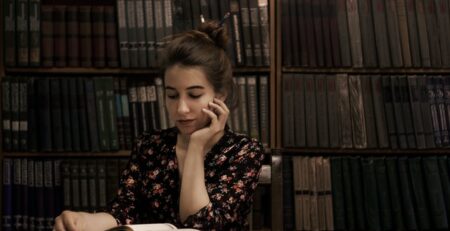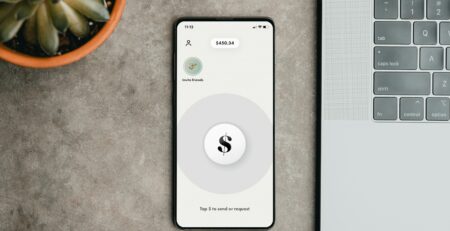Creative Legal Jobs for Designers, Web Developers, Social Media Managers & More
The legal field has plenty of possible roles for creatives. Although lawyers and paralegals need a legal education, their firms and projects still need designers, developers, and social media managers.
Like it or not, law firms are a business. They need the same sort of skills that other businesses use for advertising, SEO, and managing internal databases and portals. Focusing your creative skills on the unique requirements of law firms and other businesses in the legal realm is a great specialization.
Law and lawyers are one of the oldest modern professions and only become more important as further regulations are likely to evolve to address environmental and social problems. Keep reading to find out a few of the legal jobs creatives can get when they specialize in the legal field.
Do You Need a Degree to Work in Law?
If you want to be a lawyer, you have to go to law school. But there are many other supporting roles you can take in a law firm or company that support legal goals.
People who work in these supportive positions don’t necessarily have to have a degree at all. In many cases, they have commensurate work experience to land the position. Of course, holding a degree is quite likely going to help your case when you apply.
But degrees for certain creative professions don’t hold the weight they do in other fields. Since some institutions of higher education don’t offer much practical experience alongside their degree programs, hiring managers prefer to see work experience and certificates in specific concentrations.
Certain trade schools and portfolio schools do provide plenty of practical education and even provide graduates with exactly what they need to land their first creative job. If you’re in the early stages of a creative career and have the time and resources to dedicate to a program like that, it’s probably a smart move.
The good news for anyone who wants to involve themselves in the nobler or more complicated world of the law is that you can certainly do so. Creatives with concentrations in social media marketing, software design, and UX/UI are particularly in high demand for long-term legal work.

Law for Creatives vs. Creatives in Law
To avoid confusion, we’d like to point out that we aren’t only discussing law that involves legal pursuits like music or acting. Entertainment law is its own practice, as is intellectual property law.
Many businesses are tangentially connected to these practice areas. But there are many other legal jobs that are totally separate. You might become a graphic designer for a personal injury firm, which is a much better example of the sort of career path we’re going to discuss in the rest of this guide.
What is Legal Design?
It should be no surprise that design thinking has found its way into the legal field just the same way it has in just about every other white collar industry.
Few experiences are as confusing and frustrating as navigating legal problems. Lawyers and law firms are constantly seeking out new approaches that allow them to make this process easier for their clients and user-centered design can help.
Legal design is the application of design thinking to the workday experiences of lawyers and other legal professionals. Explaining all the ins and outs of a typical day at a law firm would take quite a while, but we can summarize a few things to give some idea of the many ways design thinking may be applied in a legal environment.
- Client Acquisition
Perhaps you live in a city where advertisements for lawyers and legal aid are already popular. In that case, you can already surmise that lawyers – just like any other professional – are nearly always on the lookout for new clientele.
They need to be savvy in this regard. Not only are attorneys in danger of seeming overly litigious if they’re constantly looking out for someone who wants to sue, but they’re also far more likely to be wasting valuable resources on a losing case.
For many practices, such a scenario means they aren’t going to get paid at all. New tools like apps and chatbots that function with artificial intelligence are doing wonders for law firms who want to be able to weed out people who don’t have enough to build a case on without wasting employee time.
Plus, marketing helps get the firm name out into the world. People never think about seeking legal help until they really need it, so having a brand that sticks out in their mind can position a firm perfectly to get the call when they’re needed.
- Data Organization
Law firms and sole practitioners have to deal with tons and tons of information. Case law, individual case files, discovery materials, and internal memos about strategy and work done on a particular case all need to be stored and readily accessible.
When it comes to internal work and adding notes on a file, firm management software offers comprehensive packaging for client intake, calendaring, timekeeping, and notes. Creatives are needed to build these products into their best iteration so the clients and other legal workers can have an easier time.
Other data that law firms collect, such as discovery materials, frequently need to be stored securely and even disposed of properly in accordance with the law. Creatives who are focused on structure can find work building such systems.
Still other creatives have done great work making the law itself more conveniently available. Most lawyers haven’t spent tons of time in the stacks of a library since they were in law school, and even then, most people are using internet tools to research case law and draft their documents.
For that matter, drafting documents and keeping them attached to a particular case file is another place where design thinking can help attorneys. Sometimes legal professionals are the user and other times their clients are, but creatives can almost always dream up a way to make things more streamlined.
- Explaining the Law
Perhaps nothing represents the daily tasks of legal professionals as completely as putting the law in layman’s terms. Mostly, legal procedures don’t make sense or there is simply not enough time to parse through everything required to understand the situation. Design thinking can help lawyers and other legal workers break down the law in a way people can readily understand.
Creatives are well-suited to this sort of task. After all, design thinking is geared toward merging business concerns and a better user experience. Explaining the law makes a better user experience and helps attorneys accomplish their jobs, which is what the law firm needs them to do.
- Designing New Products
We’re not only talking about new legal services here. Lawyers and legal teams are regularly brought in to make sure a groundbreaking new product or service meets the requirements set out in the law. But they typically don’t have any direct experience with design.
So designers with no experience in the law are sitting around a table with lawyers without experience in product design. Who better to bridge the gap between the two groups than someone who has specialized in legal design?
Legal designers can stay focused on the experience of the end user while still maintaining respect for the requirements as laid out in the law. This frees up the lawyers to research ways they could open up new regulatory avenues so the company can act differently and the original designers of the company to continue improving the overall UX of their products and services.
- Privacy & Data Protection
This is closely tied in with data organization but it plays such an outsized role in the legal field that it merits its own particular mention. There are laws surrounding the information gathered by attorneys and the way they have to store it. Firms are frequently the targets of hackers who want to gain access to everything from social security numbers to financial information.
You may have already heard of something called attorney-client privilege. It’s a protection afforded to communications between the lawyer and the client. If an attorney is found to have violated this practice or left personal data susceptible to theft or cyberattacks, then they could be sued for malpractice.
As such, all lawyers need to be able to protect their case files and protected communications. Digital tools have to be completely safe and trustworthy. Creatives work to understand the practice of the attorneys so that they can find a middle ground between the data concerns and the daily duties of the people who work at the law firm.
- Discovery Materials
When a lawsuit progresses to a certain stage, there is a period of discovery where each side can request materials from the other and ask third parties for things like medical and financial records. Depending on how far-reaching and how old the case is, there could be immense amounts of data that need to be stored, retrievable, and accessible, sometimes for years.
Discovery can last years and it could be obtainable in later or related cases. Attorneys not only need to be able to store it but they also have to send it within a certain time frame. Courts limit how these transmissions can occur and lawyers have to follow these limits to the letter.
Building products so that attorneys can go through the discovery process saves them tons of time, which is great for the firm because they can do more per billable hour and great for the attorney because discovery has lots of repetitive forms and procedures.
Common Legal Jobs for Creatives
Here are some of the most common legal jobs for creatives.
1. Legal Designer
We already touched on this job a bit earlier, but legal design is essentially regular design thinking applied to the specific needs of attorneys, paralegals, and law firms.
Some training programs are popping up where you can learn how things are different when you’re working with legal design. For now, it remains a bit of a hard field to move into because landing your first creative job in a law firm without prior experience can be challenging.
If you want to move from a UX career at one company to a law firm or some other legal business, we’d recommend starting small, perhaps even freelancing on a project or two just to build your experience in the legal field.
Build a portfolio of legal creative projects and you’ll find it much easier to take on a full-time role as a legal designer.
2. Legal Content Writer
One of the ways firms and sole practitioners have appealed to the public and reached new markets is by publishing lots of online content that helps make the legal procedures they offer less opaque. Clarity makes the potentially long and difficult process of going through a legal ordeal much more manageable.
Like so many other industries, lawyers and their firms have benefited greatly from long-form content that explains certain aspects of their practice areas. Personal injury attorneys could use articles on tort reform while criminal attorneys could publish how-to’s for people charged with crimes and their families.
Legal content writers have to be able to research unfamiliar topics that could sometimes be hard to comprehend quickly. For this reason, they tend to specialize not only in legal content writing but also within a certain practice area of the law such as immigration or criminal law.
3. Web Developers
All that content has to go up somewhere. Law firms are businesses and operate much more closely to traditional companies than some might think. Web developers are needed to build stellar websites where people can sign up for services and get information about their lawyer and the company itself.
In many cases, people won’t have time or any reason to go in-person to a law firm and see their lawyer. A good website can give them somewhere to check-in without taking up time from paralegals and lawyers who have other work to do.
4. Social Media Designers
Law firms and individual attorneys have also been branding with social media for over a decade at least. Twitter, in particular, has allowed some attorneys to grow a following and make a name for themselves disseminating their legal opinions on certain matters.
Social media designers can help personalize law firms, which are notoriously impersonal traditionally. Updates about trends and links to content on the firm website are all also possible as part of larger marketing and branding efforts.
5. Legal Videographers
Lawyers and discovery companies need people to film depositions and other parts of the legal process. This film then needs to be uploaded so multiple parties can have access.
The particular details of legal videographer jobs will vary greatly with the people hiring, but it’s a great entry-level position for creatives who want to break into the audio-visual sector. With more courts and legal meetings going remote, people who know how to create professional-looking videos and provide technical support for streaming are more in demand than ever.
Because these remote meetings are so convenient, there is some possibility that they will continue to exist well into the future. Even if they don’t, anyone with experience in this field will easily be able to make a lateral move to another videographer job.

In conclusion, the world of creative legal careers is vast and evolving. By leveraging the insights from our article and exploring the suggested URLs, you can embark on a fulfilling journey where creativity and law intersect seamlessly.
There are plenty of ways creatives can get involved in the legal field without going back to college or trying to get into law school. Law firms operate very similarly to traditional businesses and have many of the same needs, including new client acquisition, marketing, social media management, and product design.
Creatives can help with all of these. In some cases, the lawyers might work for companies that are providing such services. In that case, creatives with experience in legal design can act as intermediaries between the legal team and the designers at the original company.
The overwhelming amount of data and general complexity of law makes it a ripe practice area for content writers and UX designers who want to give people a simpler process and a better experience. Working in the legal field is a great opportunity for creatives to do meaningful work that can help people through some of the most difficult times of their lives.












